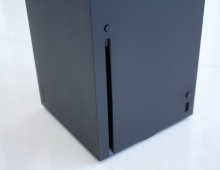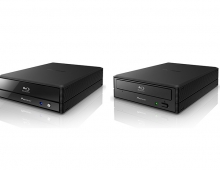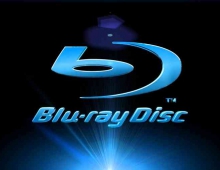Blu-Ray Writing Quality Tests
2. Specs, Modulation, Error Correction On Blu-Ray
Review Pages
2. Specs, Modulation, Error Correction On Blu-Ray
3. Basic Blu-Ray Disc Writing Quality Signals
4. Testing procedure - The DaTARIUS dataBANK
5. Measurements - LG GBW-H10N 2x & Memorex BD-R
6. Measurements - LG GBW-H10N 4x & TDK BD-R
7. Measurements - LG GBW-H10N 4x & Verbatim BD-R
8. Measurements - LG GBW-H10N 2x & TDK BD-RE
9. Measurements - LG GBW-H10N 2x & Verbatim BD-RE
10. Measurements - LG GBW-H10N 2x & Sony BD-RE
11. Measurements - LiteOn LH-2B1S 2x & Memorex BD-R
12. Measurements - LiteOn LH-2B1S 2x & TDK BD-R
13. Measurements - LiteOn LH-2B1S 2x & Verbatim BD-RE
14. Measurements - LiteOn LH-2B1S 2x & Sony BD-RE
15. Measurements - LiteOn LH-2B1S 2x & TDK BD-RE
16. Measurements - Plextor PX-B900A 2x & Verbatim BD-R
17. Measurements - Plextor PX-B900A 2x & TDK BD-R
18. Measurements - Plextor PX-B900A 2x & Verbatim BD-RE
19. Summary
In order to make the Blu-Ray measurements more comprehensible, we summarize here the basic characteristics of the Blu-ray format. The table below, shows the main parameters of a Recordable Blu-ray Disc. To maximize capacity and performance, the main optical system parameters of the Blu-ray Recordable Disc include a laser diode wavelength of 405 nm and an objective lens NA of 0.85. Additionally, the current maximum user data transfer rate is 144 Mbps (4X). The channel modulation is 17PP and the recording area can be either on-groove or in-groove.

Modulation Methods
Modulation methods are the means of encoding the source data to the channel bit data recording on the disc. The modulation scheme used for Blu-Ray Disc is 17 Parity preserve-Prohibit repeated minimum run-length transition (17PP). Parity preserve (P) refers to the method of ensuring the DC content in the data is zero. 17 refers to the minimum and maximum allowable run length limits (RLL) for data features (e.g. the marks/spaces, pits/lands) on the disc. So for BD we have a minimum data feature size of 2T and a maximum data feature size of 8T for the data (compared with 3T and 11T for the data features on DVD). Due to sync frames, feature lengths of 9T can occur. Modulation of the data occurs after the data has been previously passed through the Error Correction Code (ECC) encoder.
Data Recovery Methods: Partial Response - Maximum Likelihood (PRML)
For CD and DVD, the method for data detection was based on a zero crossing point method, using a conventional slicer. Basically, when the analogue signal (output from the optical pick-up) crosses a reference level, it indicates a binary transition. This method has its limitations, notably when the feature size (smallest pit/land) is less than the spot size, the modulation of the light is relatively small (the smaller the pit/spot size ratio the smaller the modulation). Thus, the conventional slicer can create data with non-exact mark/space lengths - otherwise known as jitter, and when this jitter becomes greater than 0.5 of a clock cycle, it becomes a bit error.
For BD, the minimum spot radius ratios are 0.88 and 0.85 of the ratio of DVD. This reduced resolution (low modulation of light by 2T pits) means that it is much more difficult to have effective data detection using a conventional slicer. Boosting the high frequency part of the signal has limited effect because this also increases the InterSymbol Interference (ISI), which is where adjacent pits and lands interfere with each other. This is mainly a problem with the shortest run lengths, particularly those that are smaller than the spot size.
Hence for BD, the Partial Response- Maximum likelihood (PRML) method is used for recovering the data from the signal.
Partial Response (PR) equalization is used to limit the effects of ISI, and then a sequence of bits is evaluated to define the most likely sequence of bits, based upon known allowed sequences. This is the Maximum Likelihood (ML) detection and uses a Viterbi algorithm to determine the ML sequence.
The Blu-Ray disc is more sensitive to burst errors compared to the DVD system. Therefore, the error correction system of Blu-Ray disc should be able to cope well with long burst errors, rather with single (random) errors.
The maximum number of errors that can be corrected depends on the number of parity symbols added. For each two parity symbols added, one error can be corrected. But Blu-Ray uses a more efficient approach to correct the burst errors. It uses a burst indicator mechanism that can detect bursts of errors before the correction starts. The advantage of this method is actually the prior knowledge of the error locations on the decoding process.
These burst indicator used in the Blu-Ray format is called picket code. The pickets are columns that are inserted in between columns of the main data at regular intervals. The main data is protected by a Reed Solomon code, while the pickets are protected by a second independent Reed Solomon code. When decoding (reading), first the picket columns are corrected. The correction information can be used to estimate the location of possible burst errors in the main data.

A BluRay Disc Error Correction Block (ECC Block) can store 64 Kilobytes of user data. This data is protected by the Long Distance Code (LDC) which has 304 code words with 216 information symbols and 32 parity symbols giving a code word of length 248. These code words are interleaved two by two in the vertical direction such that a block if 152 bytes x 469 bytes is formed as shown in the picture above.
A Blu-Ray Disc ECC block contains 4 equally spaced picket columns. The left most picket is formed by the sync pattern at the start of each row. If the sync pattern was not detected properly, that can be an indication for a burst error similar to the knowledge that a symbol of a picket column had to be corrected. The other three pickets are protected by the so-called Burst Indicator Subcode (BIS). The BIS code words are interleaved into three columns of 496 bytes each. Both LDC and BIS codes are decoded by the Reed Solomon decoder.
Reference: BD-ROM Physical Specifications
Review Pages
2. Specs, Modulation, Error Correction On Blu-Ray
3. Basic Blu-Ray Disc Writing Quality Signals
4. Testing procedure - The DaTARIUS dataBANK
5. Measurements - LG GBW-H10N 2x & Memorex BD-R
6. Measurements - LG GBW-H10N 4x & TDK BD-R
7. Measurements - LG GBW-H10N 4x & Verbatim BD-R
8. Measurements - LG GBW-H10N 2x & TDK BD-RE
9. Measurements - LG GBW-H10N 2x & Verbatim BD-RE
10. Measurements - LG GBW-H10N 2x & Sony BD-RE
11. Measurements - LiteOn LH-2B1S 2x & Memorex BD-R
12. Measurements - LiteOn LH-2B1S 2x & TDK BD-R
13. Measurements - LiteOn LH-2B1S 2x & Verbatim BD-RE
14. Measurements - LiteOn LH-2B1S 2x & Sony BD-RE
15. Measurements - LiteOn LH-2B1S 2x & TDK BD-RE
16. Measurements - Plextor PX-B900A 2x & Verbatim BD-R
17. Measurements - Plextor PX-B900A 2x & TDK BD-R
18. Measurements - Plextor PX-B900A 2x & Verbatim BD-RE
19. Summary





















